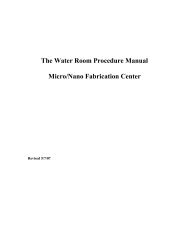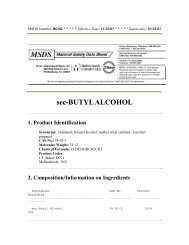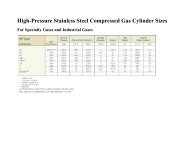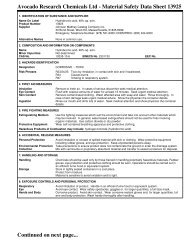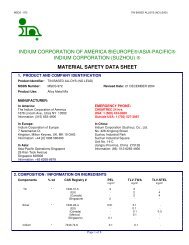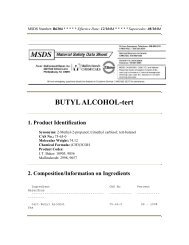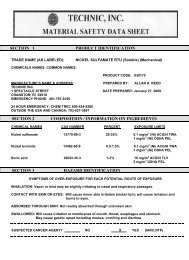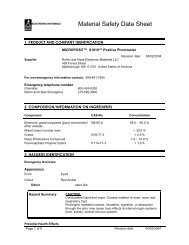Digital Temperature Controller Reference Manual
Digital Temperature Controller Reference Manual
Digital Temperature Controller Reference Manual
You also want an ePaper? Increase the reach of your titles
YUMPU automatically turns print PDFs into web optimized ePapers that Google loves.
2.2.6 Power Supply board<br />
TECHNICAL DESCRIPTION<br />
The power supply board generates the required +12, -12, +5 and -5 V that is required for the<br />
DTC.<br />
2.3 Hardware <strong>Temperature</strong> Control Loop<br />
2.3.1 Input circuit<br />
Preamplifier: The thermocouple signals are amplified on the 3-channel input boards in<br />
separate preamplifiers. The main components of these preamplifiers are a chopper stabilized<br />
operational amplifier, an open loop voltage gain amplifier and a 1 Hz filter and buffer.<br />
The chopper amplifier amplifies the low-level input first. The operational amplifier following<br />
the chopper amplifier increases the open loop voltage gain, to give an accurate and linear<br />
voltage gain over the complete input range. The 1 Hz filter limits the bandwidth of the<br />
preamplifier. This filter and the buffer are switched before the feedback resistor point. This<br />
eliminates errors introduced due to the leakage of the filter capacitors and the offset voltage<br />
of the 741 op-amp.<br />
Each 3-channel input board has one cold junction compensator circuit. The temperature at<br />
the cold junction is measured by a transducer, which produces an output current of 1 µA/K.<br />
This results in an output voltage from the amplifier of 33.9mV/ oC. After passing through a<br />
resistor divider, this becomes the correct cold junction compensation voltage for every<br />
amplifier.<br />
The output voltage of each preamplifier is 0 - 10V, corresponding to an input range of 0 -<br />
1500 oC for a PtRh 13% (type R) thermocouple.<br />
The input impedance is 4 K Ohm and to assure the mV source does not drop in voltage<br />
during measurement it should have an output impedance of 0.1 Ohm.<br />
A-D Conversion: The output voltage from the preamplifier is multiplexed and converted on<br />
the 16-channel A-D converter board. Fifteen channels of the 16 channel multiplexer are used<br />
for a maximum of 15 temperature-input signals, the remaining one being for the analog input<br />
from the rear connector. The channel to be converted is selected by the microprocessor<br />
setting the PA0-PA3 outputs of the PIA (Peripheral Interface Adapter).<br />
2.3.2 Output circuit<br />
A zero voltage crossing, optically isolated driver is used to fire the SCRs or triacs. The RMS<br />
(Root Mean Square) on state current is 100mA.<br />
Each output channel has an open/short circuit failure detector. The detector circuit measures<br />
the voltage across the SCRs or triacs via an optically coupled isolator and is connected to the<br />
common input bus line through an open collector NAND gate. A Power Alarm will be<br />
generated if the detector circuit detects a SCR failure.<br />
2.4 Software <strong>Temperature</strong> Control Loop<br />
The spike control loop on the spike thermocouples is the same for all zones. The control is<br />
proportional, integral and differential (P.I.D) and gain control is provided for limiting the<br />
power to the heating elements.<br />
DIGITAL TEMPERATURE CONTROLLER REFERENCE MANUAL 2-4



